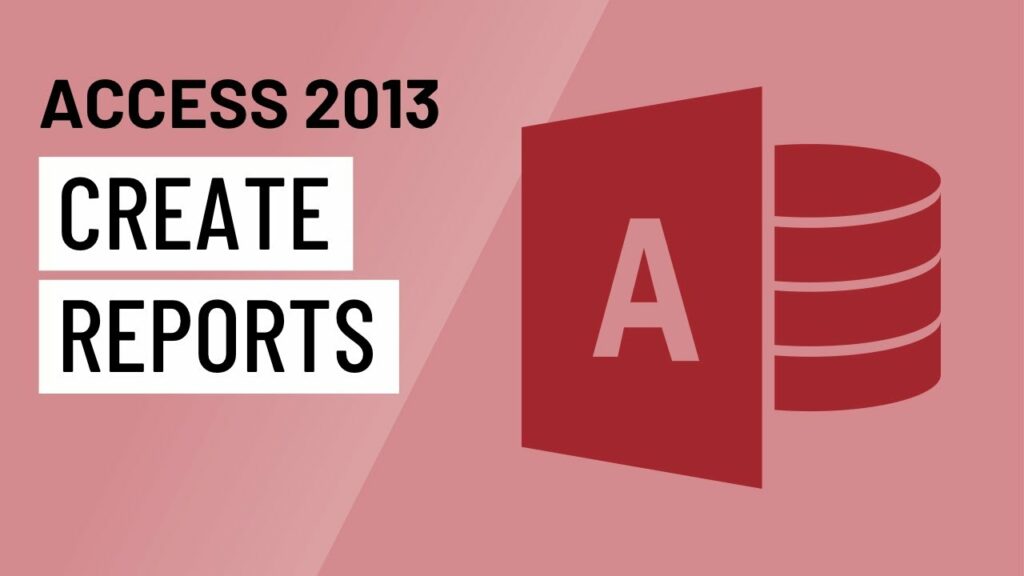Mastering Report Creation in Access 2013: Transforming Data into Insightful Visualizations

Reports play a vital role in database management systems, allowing users to present data in a structured and visually appealing format. In Microsoft Access 2013, report creation empowers users to generate professional-looking reports that convey meaningful insights from their databases. In this extensive guide, we’ll explore the intricacies of creating reports in Access 2013, covering everything from basic report design to advanced features and best practices.
Understanding Reports in Access 2013
Reports in Access 2013 are powerful tools for summarizing, analyzing, and presenting data stored in tables or queries. Reports provide users with a structured format to organize and display data, making it easier to identify trends, patterns, and outliers. Access 2013 offers a wide range of tools and features for designing, customizing, and printing reports, enabling users to create reports that meet their specific needs and requirements.
Creating a Basic Report in Access 2013
Creating a basic report in Access 2013 involves the following steps:
- Open Access 2013: Launch Access 2013 and open the database containing the data you want to report on.
- Navigate to the Report Design View: Click on the “Create” tab in the Access ribbon and select “Report Design” to open the Report Design view.
- Add Data Source: In the Report Design view, select the table or query that contains the data you want to include in the report. Drag and drop the fields from the Field List pane onto the report design surface to add them to the report.
- Arrange and Format Fields: Arrange the fields on the report design surface and format them as desired. Users can resize, reposition, and format report controls to customize the appearance of the report.
- Add Grouping and Sorting: Users can group and sort data in the report to organize it into meaningful categories. Grouping and sorting options are available in the Group, Sort, and Total pane in the Report Design view.
- Preview the Report: Once the report design is complete, click the “View” button in the Access ribbon to preview the report and ensure that it appears as expected.
- Save the Report: After previewing the report, save it by giving it a name and clicking the “Save” button in the Access ribbon.
Advanced Report Design Techniques
Access 2013 offers several advanced techniques for designing reports:
- Calculations and Expressions: Users can create calculated fields or expressions in reports to perform calculations, string manipulations, or date/time operations on report data. Calculated fields are useful for deriving insights from raw data and presenting aggregated information in reports.
- Subreports: Subreports allow users to embed one report within another report. Subreports are useful for displaying related information or providing additional context to the main report.
- Conditional Formatting: Access 2013 supports conditional formatting in reports, allowing users to apply formatting based on specified criteria. Conditional formatting helps emphasize important information, highlight exceptions, or visualize trends in report data.
- Charts and Graphs: Access 2013 allows users to add charts and graphs to reports to visualize data in a more compelling and intuitive way. Users can choose from various chart types, such as bar charts, line charts, and pie charts, and customize the appearance and layout of the charts to suit their needs.
Best Practices for Report Design
To ensure effective report design in Access 2013, consider the following best practices:
- Understand the Audience: Consider the intended audience of the report and tailor the design and content accordingly. Understand the stakeholders’ requirements and objectives to create reports that effectively communicate insights and facilitate decision-making.
- Keep Reports Concise and Relevant: Keep reports concise and focused on the most relevant information. Avoid including unnecessary details or overwhelming users with excessive data. Present key findings and insights in a clear and concise manner to facilitate understanding.
- Use Descriptive Labels and Headings: Use descriptive labels and headings in reports to provide context and clarify the meaning of data. Clearly label report elements such as fields, columns, and sections to guide users through the report and help them interpret the data accurately.
- Test Reports with Sample Data: Test reports with sample data to ensure they produce the desired results and accurately convey the intended information. Verify that calculations, expressions, and formatting are applied correctly and that the report layout is visually appealing and easy to navigate.
Conclusion
In conclusion, mastering report creation in Microsoft Access 2013 is essential for transforming data into insightful visualizations that drive informed decision-making. By understanding the fundamentals of report design, leveraging advanced techniques, and following best practices, users can create reports that effectively communicate insights and facilitate data-driven decision-making. With Access 2013’s robust reporting capabilities, users have the tools and resources they need to unlock valuable insights from their databases and drive success in their projects or business endeavors.




